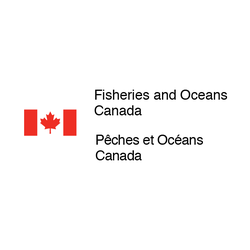
Whalesafe Gear Adoption Fund
At a glance
- No Condition
- Open Date : December 22, 2022
- Agriculture, forestry, fishing and hunting
- Manufacturing
- Educational services
- Canada
- Non-profit
- Public or Parapublic institution
- For-profit business
- Non-financial cooperative
- All revenue ranges
- All organization sizes
- Indigenous Peoples
- Canadians
- Higher Education
- Research
- Environment
- Animal Protection
- Economic, Social and Community Development
- Business Associations
- Indigenous peoples
- Rural / Remote communities
- Business owners / entrepreneurs
- Academia / students
- All structures
- Regional
- Provincial
- National
Overview
Get financial support towards the purchase, testing, and refinement of whalesafe gear and support the advancement of rope-on-demand gear technology.
Activities funded
The Whalesafe Gear Adoption Fund focuses on enhancing and promoting the use of innovative fishing gear to protect whale species. Eligible projects and activities include testing, developing, and implementing low breaking strength and on-demand gear systems across Canadian fisheries.
- Testing whalesafe gear for offshore lobster fishery in high-current conditions.
- Purchasing and testing whalesafe gear in snow crab fishing gear.
- Increasing manufacturing capacity for rope-on-demand systems.
- Purchasing and testing rope-on-demand systems and training for snow crab fishery.
- Conducting at-sea trials of low breaking-strength gear modifications around Magdalen Islands.
- Testing and evaluating rope-on-demand systems in lobster and crab fisheries.
- Developing gear location marking systems for rope-on-demand fishing gear.
- Creating a gear-lending program for trials of whalesafe gear.
- Testing low breaking strength technology for multiple fisheries.
- Purchasing and testing time tension line cutters for offshore lobster fishery.
- Setting up manufacturing for cost-effective braided low breaking strength links.
- Testing various low breaking strength technologies as whalesafe gear options.
- Adapting and testing rope-on-demand buoy systems used in European fisheries.
- Testing gear modification systems emphasizing ropeless technology.
- Developing and commercializing innovative rope-on-demand fishing systems.
- Conducting trials and demonstration sessions for gear testing and outreach.
- Testing low breaking-strength rope in lobster and groundfish fisheries.
- Testing Edgetech rope-on-demand system for crab and lobster fisheries.
- Supporting the development of simple ropeless trap systems.
- Developing low breaking strength link prototypes with adjustable thresholds.
- Purchasing and testing low breaking strength and ropeless gear by Indigenous fishers.
- Conducting trials with ropeless traps with inflatable lift bags and acoustic systems.
- Testing whalesafe gear modifications for specific fishing conditions.
- Expanding trials of rope-on-demand systems and low breaking strength devices.
- Increasing manufacturing capacity for low breaking strength Rope Spring Release.
- Developing new low breaking strength devices for specific fisheries.
- Commercializing rope-on-demand buoy systems for fixed gear fisheries.
- Testing and refining rope-on-demand units for the lobster fishery.
- Identifying whalesafe gear solutions for PEI lobster fishers through cost-sharing trials.
- Producing durable and commercially viable low breaking strength rope.
- Testing fishing methods to reduce whale entanglement risk with innovative gear.
Eligibility
The Whalesafe Gear Adoption Fund eligible entities include a diverse range of organizations with various structures.
- Canadian not-for-profit and charitable organizations
- Canadian companies, businesses, organizations, and associations
- Indigenous organizations and communities
- Recognized research, academic, and educational institutions
Who is eligible?
The Whalesafe Gear Adoption Fund (WSGF) allowed applications from a diverse range of Canadian entities committed to whale-safe fishing gear innovation and adoption.
- Canadian not-for-profit and charitable organizations
- Canadian companies, businesses, organizations, and associations
- Indigenous organizations and communities
- Recognized research, academic, and educational institutions
Eligible expenses
The Whalesafe Gear Adoption Fund supports projects aiming to test and implement innovative fishing technologies to prevent whale entanglement. Eligible activities focus on the evaluation and adaptation of whalesafe gear across various Canadian fisheries.
- Testing of low breaking strength rope and links in deep-sea, high-current lobster fisheries by Acadia University.
- Purchase and testing of different types of whalesafe gear for snow crab fishing by the Area 19 Snow Crab Association.
- Developing manufacturing capacity for rope-on-demand systems by Ashored Inc.
- Testing rope-on-demand systems and training for their implementation by the Association des Crabiers Gaspésiens.
- At-sea trials of low breaking-strength gear by the Association of Inshore Fishermen/Association des pêcheurs côtiers des Iles.
- Testing and evaluation of rope-on-demand systems by the Canadian Centre for Fisheries Innovation.
- Developing a virtual gear location marking system to support rope-on-demand fishing gear use by the Canadian Whale Institute.
- Creation of a gear-lending program for whalesafe gear by the Canadian Wildlife Federation.
- Testing low breaking strength technologies in various fisheries by the Cape Breton Fish Harvesters Association.
- Installing and refining time tension line cutters for lobster gear by Clearwater Seafoods.
- Producing cost-effective low breaking strength links and conducting trials by CoastLine Cordage Group Ltd.
- Testing low breaking strength technologies by the Coldwater Lobster Association.
- Adapting and testing rope-on-demand systems in Quebec by the Conseil de la Première Nation des Innus de Nutashkuan.
- Testing and adopting rope-on-demand and ropeless airbag systems by the Coopérative des capitaines-propriétaires de la Gaspésie.
- Development of a rope-on-demand fishing system by Devocean.
- Testing various whalesafe gear technologies by the Fisheries and Marine Institute of Memorial University.
- Testing low breaking strength devices over two years by the Fundy North Fishermen's Association.
- Testing low breaking-strength rope in lobster and groundfish fisheries by the Grand Manan Fishermen's Association.
- Testing the Edgetech rope-on-demand system by Homarus Inc.
- Developing a simple ropeless trap system by JASCO.
- Developing and refining a low breaking strength link by Merinov.
- Expanding low breaking strength gear trials by the Mi'gmaq Maliseet Aboriginal Fisheries Management Association.
- Conducting trials of ropeless traps with inflatable lift bags by the Miawpukek First Nation.
- Testing different whalesafe gear modifications by the Micmacs of Gesgapegiag.
- Testing rope-on-demand systems and low breaking strength devices by the Millbrook First Nation.
- Increasing manufacturing and testing capacity for low breaking strength devices by Nova Robotics.
- Incorporating whalesafe technologies into commercial fisheries by Nova Robotics.
- Developing a viable rope-on-demand buoy system by OCEAN-CAM.
- Testing rope-on-demand units in the lobster fishery by the Passamaquoddy Recognition Group.
- Identifying whalesafe gear solutions for PEI lobster fishers by the PEI Fishermen's Association.
- Producing rope with specific breaking strength requirements by Polysteel Atlantic Ltd.
- Testing innovative fishing methods to reduce whale entanglement risk by the Réseau des pêcheurs professionnels du sud de la Gaspésie.
Eligible geographic areas
The Whalesafe Gear Adoption Fund is accessible to companies and organizations throughout various regions in Canada. Funding supports project implementations across several Atlantic provinces and Quebec.
- Nova Scotia
- Newfoundland and Labrador
- New Brunswick
- Prince Edward Island
- Quebec
- Atlantic Canada (general coverage including unspecified regions)
Selection criteria
- The project must focus on the development or testing of whalesafe fishing gear.
- Applicants must belong to eligible groups such as Canadian not-for-profit and charitable organizations, Canadian companies, businesses, organizations, and associations, Indigenous organizations and communities, and recognized research, academic, and educational institutions.
- The proposed project must align with the objectives of the Whalesafe Gear Adoption Fund, which include promoting the use of low breaking-strength fishing gear to protect whales, ensuring the safety and effectiveness of the gear, and supporting the transition to new gear for harvesters.
- Preference may be given to projects that demonstrate innovation, scalability, cost-effectiveness, and potential for broad adoption in Canadian fisheries.
- Proposals should clearly outline the intended outcomes, methodology, timeline, and budget for the project.
How to apply
Fund Consultation
- Visit the Fisheries and Oceans Canada website to obtain the most recent information about the Equipment Adoption Fund for Whale Protection.
- Carefully read the guidelines and eligibility criteria of the fund.
Application Preparation
- Develop a project describing how adopting safe fishing gear for whales will be integrated into your practice.
- Provide a budget estimate for the purchase, testing, and improvement of fishing gear.
- Gather all necessary supporting documents, including implementation plans and expected outcomes.
Application Submission
- Send your completed application package to the email or mailing address indicated on the Fisheries and Oceans Canada website.
- Make sure that all required documents are included and properly filled out.
Receipt Confirmation
- Receive a confirmation of receipt of your application from the funding agency.
- Keep the confirmation for your records and as proof of your submission.
Additional information
Here are additional relevant details for this grant:
- The Whalesafe Gear Adoption Fund seeks to increase the domestic production and availability of safe, effective whalesafe gear, promoting both environmental and economic benefits.
- The program includes collaboration with Indigenous partners, NGOs, and academic experts in developing and implementing the strategy for whalesafe gear.
- The program aims to open fisheries before North Atlantic right whales arrive to prevent entanglement.
Frequently Asked Questions about the Whalesafe Gear Adoption Fund Program
What is the Whalesafe Gear Adoption Fund?
How much funding can be received?
What expenses are eligible under Whalesafe Gear Adoption Fund?
What is the deadline to apply?
Is the Whalesafe Gear Adoption Fund a grant, loan, or tax credit?
Who are the financial supporters of the Whalesafe Gear Adoption Fund?
Who is eligible for the Whalesafe Gear Adoption Fund program?
Who can I contact for more information about the Whalesafe Gear Adoption Fund?
Where is the Whalesafe Gear Adoption Fund available?
Are Indigenous Peoples eligible for the Whalesafe Gear Adoption Fund program?
More programs like this
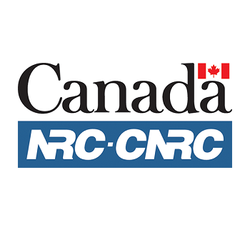
Industrial Research Assistance Program (IRAP) – AI Assist
National Research Council Canada (NRC)
Clean Technology Manufacturing (CTM) Investment Tax Credit (ITC)
Canada Revenue Agency (CRA)
Strategic Innovation Fund (SIF)
Innovation, Science and Economic Development Canada (ISED)
AI-Powered Supply Chains Cluster (Scale AI)
Global Innovation Clusters (GIC)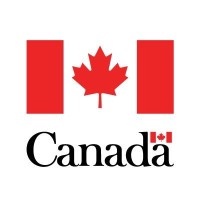
Green Industrial Facilities and Manufacturing Program (GIFMP) — Industrial Facility Track
Natural Resources Canada (NRCan)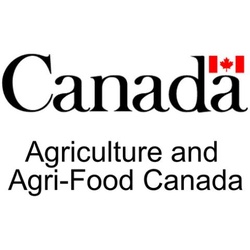
AgriScience Program – Clusters
Agriculture and Agri-Food Canada (AAFC)
Mitacs Accelerate
Mitacs
NRC IRAP – Support for clean technology
National Research Council Canada (NRC)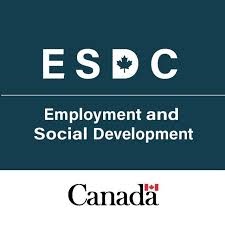
Canada Service Corps – Service Placements Regional Stream
Employment and Social Development Canada (ESDC)